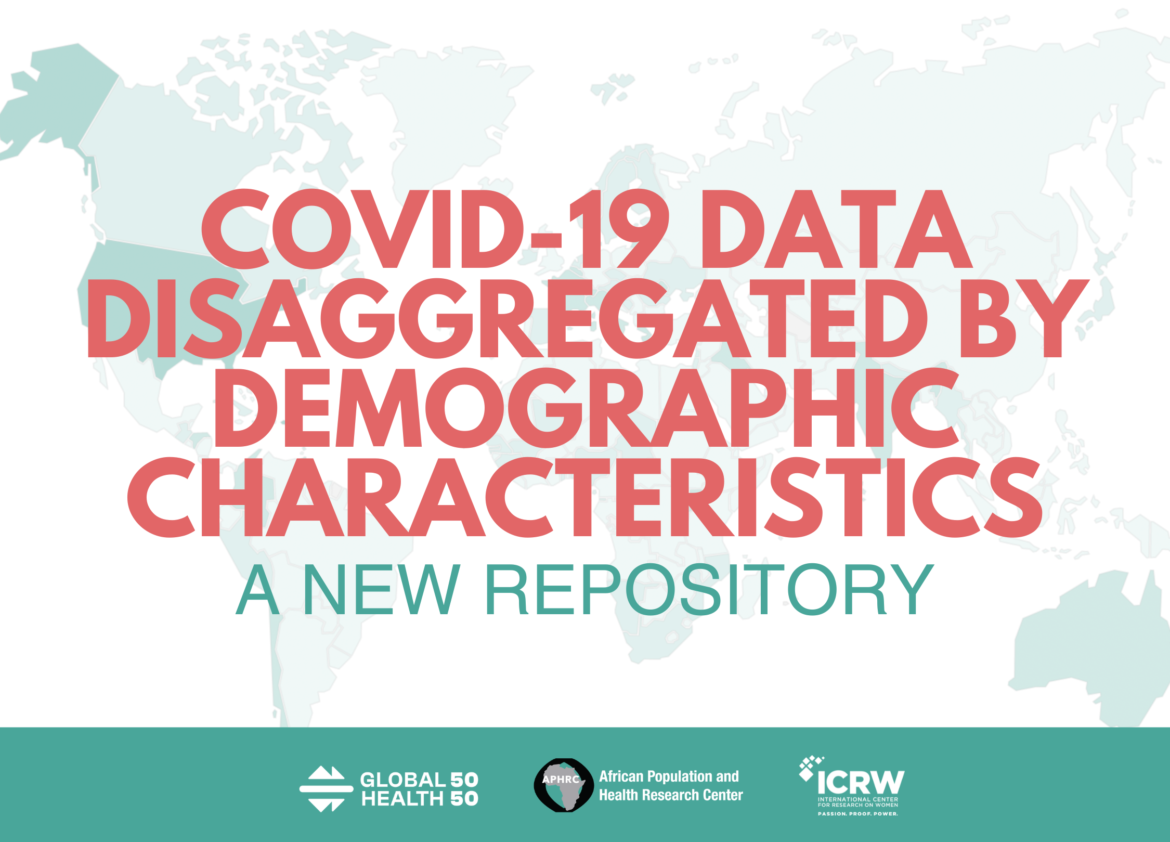A scarcity of disaggregated COVID-19 data – a new repository
Three years ago, as many of us took refuge in our homes to stay safe from COVID-19, it was apparent that the disease posed a greater risk to the elderly. Despite the early recognition of the impact of COVID-19 on this vulnerable group of people, and two and a half years later, only 84 countries (41%) reported COVID-19 data disaggregated by age. Without disaggregated data it is difficult to understand how a disease impacts different groups of people or to begin to implement tailored policies or interventions to prevent health inequities.
This finding emerges from a new repository, collated by Global Health 50/50, the African Population and Health Research Center (APHRC), and the International Center for Research on Women (ICRW). The repository provides sources to national datasets for disaggregated COVID-19 data found in October 2022. Disaggregated data refers to data that is broken down into smaller subcategories based on various demographic or geographic characteristics and we searched for data on ten characteristics including: sex/gender; age; internally displaced persons (IDPs) and refugees; nationality; people living with disability; people with comorbidities; pregnant and or breastfeeding women; race and ethnicity; rural/urban; socio-economic status.
The findings from the repository show that there is very limited national COVID-19 data that is disaggregated by demographic characteristics other than age. The data shows only a handful of countries reported COVID-19 data on race or ethnicity (5 countries), disability (5 countries), socio-economic status (4 countries), or the impact of COVID-19 in people with pre-existing illnesses/comorbidities (16 countries). The majority of countries that reported disaggregated data are classified as high income. Low-income countries had the least disaggregated data available.
Commenting on these findings, Lorenz Noe, Research manager at Open Data Watch said, “Without COVID-19 data disaggregated by demographic characteristics, we risk overlooking the unique challenges and needs of specific groups, perpetuating health disparities and inequities that have persisted for far too long. This repository shows just how many countries are facing this risk.”
Data disaggregated by demographic characteristics enhances the ability of countries to promote equitable access to prevention and care interventions, monitor the possible inequitable impacts of the pandemic on different groups of people, and ensure that no-one is left behind in responses to the pandemic. The researchers made five recommendations for strengthening the availability of disaggregated data:
- Collect data disaggregated by as many of the recommended demographic characteristics outlined in SDG 17.18 as possible.
- Demographic characteristics will vary by region or context and should be clearly defined (with the involvement of affected population groups) and standardised to the extent possible for anyone accessing or using the data.
- Research institutes and national surveillance and statistical offices engaged in collecting and publishing disaggregated data need central support including appropriate funding.
- Disaggregated data should be open in formats that are accessible.
- Decision makers should more routinely use disaggregated data to shape and inform policy–and particularly to identify and address population groups left behind.
The full repository can be explored here.


